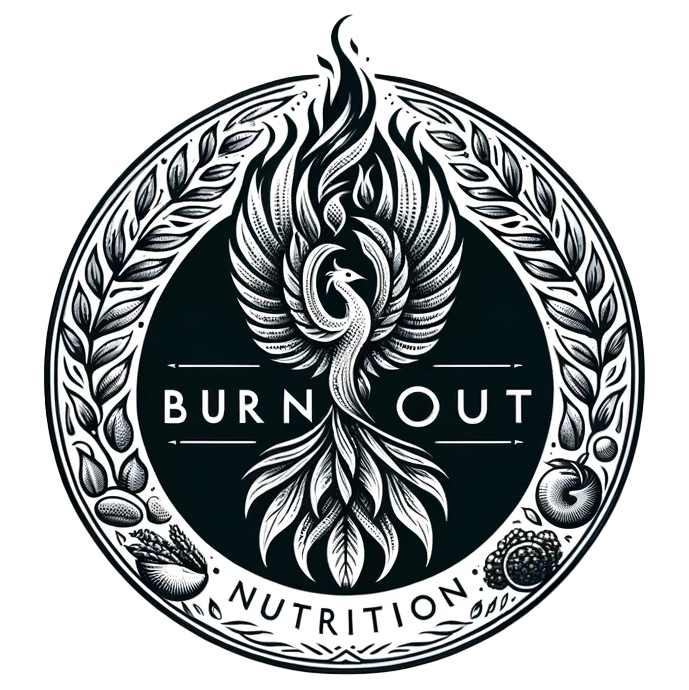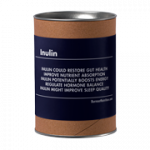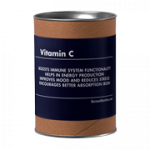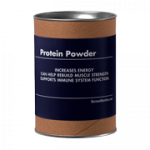Antibiotics are essential for treating bacterial infections, but they can disrupt the balance of good and bad bacteria in your gut, leading to digestive issues and a weakened immune system. To restore gut health after antibiotics, follow these steps:
-
Eat Probiotic-Rich Foods
- Yogurt, kefir, sauerkraut, kimchi, miso
- Replenish good bacteria
-
Take a Probiotic Supplement
- Look for high CFU count (billions)
- Multiple strains like Lactobacillus, Saccharomyces, Bifidobacterium
-
Consume Prebiotic Foods
- Asparagus, onions, garlic, bananas, oats
- Feed and promote growth of good bacteria
-
Increase Fiber Intake
- Fruits, vegetables, whole grains, legumes
- Nourishes good gut bacteria
-
Avoid Processed Foods and Added Sugars
- Can disrupt gut microbiome balance
-
Eat Anti-Inflammatory Foods
- Leafy greens, fatty fish, berries, turmeric, ginger
- Reduce gut inflammation
-
Get Enough Exercise and Rest
- Exercise increases gut bacteria variety
- Rest allows gut repair and recovery
-
Manage Stress
- Practice relaxation techniques like deep breathing, meditation, yoga
- Chronic stress can worsen gut imbalance
-
Stay Hydrated
- Drink water and eat water-rich foods
- Promotes growth of good bacteria and flushes toxins
-
Consider Gut Microbiome Testing
- Understand your gut bacteria balance
- Guide personalized treatment plan
By following these strategies, you can actively support the replenishment of your gut microbiome and promote overall digestive and immune health after taking antibiotics.
Related video from YouTube
1. Eat Foods with Live Cultures
After taking antibiotics, it’s crucial to replenish the good bacteria in your gut. Consume foods with live cultures to help restore balance:
Yogurt
Look for yogurt with live, active cultures like Lactobacillus and Bifidobacterium. Greek or plain yogurt with minimal added sugars is best.
Kefir
This fermented milk drink contains diverse probiotic bacteria and yeast. It has a tangy, slightly fizzy taste.
Sauerkraut
Unpasteurized sauerkraut is packed with probiotics like Lactobacillus plantarum. It’s made from fermented cabbage.
Kimchi
This spicy Korean dish made from fermented cabbage and veggies is rich in probiotics like Lactobacillus and Bifidobacterium.
Miso
Miso, a Japanese seasoning made from fermented soybeans, contains beneficial bacteria like Bacillus subtilis. Use it in soups, dressings, and marinades.
Eating a variety of these probiotic-rich foods can help replenish the good bacteria in your gut after antibiotics, supporting digestive health and immunity.
| Probiotic-Rich Foods | Key Probiotic Strains |
|---|---|
| Yogurt | Lactobacillus, Bifidobacterium |
| Kefir | Diverse probiotic bacteria and yeast |
| Sauerkraut | Lactobacillus plantarum |
| Kimchi | Lactobacillus, Bifidobacterium |
| Miso | Bacillus subtilis |
2. Take a Probiotic Supplement
After taking antibiotics, it’s crucial to replenish the good bacteria in your gut. A high-quality probiotic supplement can help restore the balance of your gut microbiome.
When choosing a probiotic supplement, look for these key factors:
Probiotic Strains
Look for well-researched strains like Lactobacilli and Saccharomyces. These strains help reduce digestive discomfort and rebalance the gut after antibiotic use.
| Probiotic Strain | Benefits |
|---|---|
| Lactobacillus | Reduces digestive issues, supports immunity |
| Saccharomyces | Helps restore gut flora, reduces antibiotic-associated diarrhea |
| Bifidobacterium | Promotes digestive health, supports immune system |
Colony-Forming Units (CFUs)
Choose a supplement with a high CFU count, typically in the billions. Higher CFUs increase the chances of the probiotics surviving and colonizing the gut.
Strain Diversity
Look for supplements with multiple strains of beneficial bacteria, as different strains provide different benefits.
Prebiotic Content
Consider a supplement with prebiotics, which act as food for the probiotics, promoting their growth and survival.
Delivery System
Opt for supplements with an advanced delivery system, like delayed-release capsules or enteric coatings, to ensure the probiotics reach the intestines alive.
Storage Requirements
Follow the storage instructions carefully, as probiotics are sensitive to heat, moisture, and light.
Start taking a probiotic supplement while still on antibiotics and continue for several weeks after completing the course. This can help replenish the good bacteria and support a healthy gut environment.
3. Eat Foods with Prebiotics
Prebiotics are types of fiber that feed the good bacteria in your gut. Eating prebiotic-rich foods can help restore the friendly gut bacteria lost from antibiotics.
Prebiotic-Rich Vegetables
| Vegetable | Prebiotic Fiber |
|---|---|
| Asparagus | Inulin |
| Onions and Garlic | Inulin, Fructooligosaccharides (FOS) |
| Leeks | Inulin and other prebiotic fibers |
| Jerusalem Artichokes | High in inulin |
Prebiotic-Rich Fruits
| Fruit | Prebiotic Fiber |
|---|---|
| Bananas | Inulin, Resistant Starch |
| Apples | Pectin (especially in the peel) |
Prebiotic-Rich Whole Grains
| Whole Grain | Prebiotic Fiber |
|---|---|
| Oats | Beta-glucan, Resistant Starch |
| Barley | Beta-glucan |
Prebiotic-Rich Legumes
- Chickpeas, Lentils, and Beans: Contain oligosaccharides, polyphenols, and resistant starch.
Other Prebiotic Sources
- Chicory Root: High in inulin.
- Dandelion Greens: Rich in prebiotic fiber, vitamins, and minerals.
Include a variety of these prebiotic-rich foods in your daily meals and snacks. This can help restore and maintain a healthy balance of gut bacteria after taking antibiotics.
4. Increase Fiber Intake
Fiber plays a key role in keeping your gut microbiome healthy and promoting the growth of good gut bacteria. After taking antibiotics, boosting your fiber intake can help replenish the beneficial bacteria that were lost.
Fiber-Rich Foods to Eat
- Fruits: Raspberries, bananas, pears, and apples (with the peel) are packed with fiber and prebiotics.
- Veggies: Asparagus, onions, garlic, leeks, and Jerusalem artichokes are rich in prebiotic fibers like inulin and fructooligosaccharides (FOS).
- Whole Grains: Oats and barley contain beta-glucan and resistant starch, which feed the good gut bacteria.
- Legumes: Chickpeas, lentils, and beans are loaded with oligosaccharides, polyphenols, and resistant starch, promoting a healthy gut.
Tips for Adding More Fiber
- Gradually increase your fiber intake to avoid digestive discomfort.
- Aim for at least 25-30 grams of fiber per day from various sources.
- Pair high-fiber foods with probiotic-rich foods like yogurt, kefir, or fermented veggies.
- Drink plenty of water to help your body digest the extra fiber.
| Fiber-Rich Foods | Fiber Types |
|---|---|
| Fruits (raspberries, bananas, pears, apples) | Fiber, prebiotics |
| Veggies (asparagus, onions, garlic, leeks, Jerusalem artichokes) | Inulin, fructooligosaccharides (FOS) |
| Whole Grains (oats, barley) | Beta-glucan, resistant starch |
| Legumes (chickpeas, lentils, beans) | Oligosaccharides, polyphenols, resistant starch |
Incorporating a variety of fiber-rich foods into your diet can help restore the balance of your gut microbiome and support overall digestive health after taking antibiotics.
5. Avoid Processed Foods and Added Sugars
After taking antibiotics, it’s crucial to steer clear of processed foods and added sugars. These can disrupt the balance of good bacteria in your gut, hindering its recovery.
Processed Foods to Avoid
Processed foods often contain artificial additives, preservatives, and high amounts of sodium. These can contribute to inflammation and throw off the delicate balance of gut bacteria. Examples include:
- Fast food
- Packaged snacks (chips, crackers, cookies)
- Processed meats (hot dogs, deli meats, sausages)
- Canned foods with added preservatives
Added Sugars to Limit
Consuming too much added sugar can feed harmful bacteria in the gut and promote the growth of yeast and candida, leading to imbalances and potential infections. Limit or avoid foods high in added sugars, such as:
- Sodas and sugary drinks
- Candy and desserts
- Sweetened breakfast cereals
- Fruit juices with added sugars
| Avoid | Choose Instead |
|---|---|
| Processed foods | Fresh fruits, vegetables, lean proteins, whole grains |
| Added sugars | Natural sweeteners like honey or maple syrup in moderation |
Instead, focus on a diet rich in whole, unprocessed foods. These nutrient-dense foods provide essential vitamins, minerals, and fiber that support a healthy gut environment and promote the growth of beneficial bacteria.
sbb-itb-cf04d29
6. Eat Foods and Herbs That Reduce Inflammation
After taking antibiotics, it’s important to eat foods and herbs that can help calm inflammation in your gut. Antibiotics can disrupt the balance of good and bad bacteria, leading to inflammation. Here are some options to consider:
Foods That Reduce Inflammation
- Leafy Greens: Spinach, kale, and arugula are packed with nutrients that can lower inflammation.
- Fatty Fish: Salmon, mackerel, and sardines are high in omega-3 fatty acids, which have anti-inflammatory effects.
- Berries: Blueberries, raspberries, and strawberries contain antioxidants that combat inflammation.
- Nuts and Seeds: Almonds, walnuts, and chia seeds are good sources of compounds that reduce inflammation.
- Olive Oil: Extra virgin olive oil is rich in healthy fats and antioxidants that can help lower inflammation.
Herbs That Reduce Inflammation
| Herb | Anti-Inflammatory Properties |
|---|---|
| Turmeric | Contains curcumin, a powerful compound that reduces inflammation. |
| Ginger | Fresh ginger has anti-inflammatory and antioxidant properties that can soothe the gut. |
| Cinnamon | This spice has been shown to have anti-inflammatory effects in the body. |
| Garlic | Garlic contains allicin, a compound with anti-inflammatory and antimicrobial properties. |
| Green Tea | Rich in polyphenols, green tea can help reduce inflammation and support gut health. |
Eating these anti-inflammatory foods and herbs can help calm inflammation, support the growth of good gut bacteria, and promote overall gut healing after taking antibiotics.
7. Get Plenty of Rest and Exercise
Regular exercise and enough rest are key to restoring gut health after taking antibiotics. Exercise helps promote a balanced gut microbiome, while rest allows the body to recover and repair.
Exercise Benefits for Gut Health
- Increases Gut Bacteria Variety: Studies show that regular moderate exercise increases the variety of good gut bacteria species like Faecalibacterium prausnitzii, Roseburia hominis, and Akkermansia muciniphila. These bacteria produce compounds that nourish the gut lining.
- Reduces Inflammation: Exercise lowers inflammation in the body and gut, which can increase after antibiotic use. Lower inflammation supports gut healing and a healthy microbiome.
- Improves Bowel Function: Moderate aerobic exercise has been shown to improve bowel movements and colon transit time, aiding in waste and toxin removal.
Why Rest Matters
- Allows Gut Repair: Adequate sleep and rest give the body time to repair the gut lining and restore the microbiome after antibiotics.
- Reduces Stress: Chronic stress can worsen gut inflammation and imbalance. Prioritizing rest helps manage stress levels, creating a better environment for gut healing.
- Supports Natural Rhythms: Maintaining consistent sleep-wake cycles aligns with the gut’s natural rhythms, promoting optimal digestion and microbiome balance.
To support gut recovery, aim for 30-60 minutes of moderate aerobic exercise (e.g., brisk walking, cycling, swimming) most days of the week. Complement your exercise routine with 7-9 hours of quality sleep per night and periods of rest and relaxation throughout the day.
8. Manage Stress
Stress can harm your gut health and disrupt the balance of good and bad bacteria in your gut. After taking antibiotics, it’s vital to control stress levels to help restore your gut flora. Here are some effective ways to do this:
Practice Relaxation Techniques
Engaging in relaxation practices like deep breathing, meditation, or yoga can calm your mind and lower stress levels. These techniques have been proven to reduce stress and promote a healthier gut.
Deep Breathing: Take a few minutes each day to practice deep belly breathing. Inhale slowly through your nose, allowing your abdomen to expand, and exhale through your mouth. This simple exercise can activate your body’s relaxation response and reduce inflammation in your gut.
Meditation: Set aside 10-15 minutes daily to focus on your breath and let go of intrusive thoughts. Mindfulness meditation has been shown to increase good gut bacteria.
Yoga: The combination of physical postures, breathing exercises, and meditation in yoga can effectively manage stress and support gut health.
Prioritize Self-Care and Relaxation
Make time for activities that promote relaxation and rejuvenation, such as:
- Spending time in nature or gardening
- Engaging in enjoyable hobbies or creative pursuits
- Practicing gentle exercise like walking or stretching
- Scheduling regular massages or spa treatments
- Spending quality time with loved ones or pets
Chronic stress can drain your energy and hinder your body’s ability to heal. Relaxation is crucial for recovery.
Delegate and Seek Support
Identify sources of stress in your life and find ways to delegate or seek support. For example, if you’re planning a move, consider hiring professional movers to minimize the stress and physical strain.
Don’t hesitate to ask friends or family for assistance with tasks or responsibilities that feel overwhelming. Building a supportive network can significantly reduce stress levels and promote overall well-being.
9. Stay Hydrated
Proper hydration is key for a healthy gut microbiome, especially after taking antibiotics. Antibiotics can disrupt the balance of good and bad gut bacteria, and staying hydrated helps promote the growth of good bacteria while flushing out toxins and waste.
Drink Plenty of Water
The simplest way to stay hydrated is to drink enough water. Aim for at least 8 glasses (64 ounces) of water per day, and more if you’re active or live in a hot climate. Carry a reusable water bottle to make it easier to drink water consistently.
Eat Water-Rich Foods
In addition to drinking water, eat water-rich foods for hydration and nutrients that support gut health:
| Water-Rich Foods |
|---|
| Fruits: watermelon, berries, oranges, grapefruits |
| Vegetables: cucumbers, tomatoes, zucchini, leafy greens |
| Broths and soups |
Limit Dehydrating Beverages
Limit alcohol, caffeinated drinks, and sugary sodas, as these can act as diuretics, promoting fluid loss and disrupting gut bacteria balance.
Check Urine Color
A simple way to gauge hydration is to check your urine color. Pale, light-yellow urine typically indicates adequate hydration, while dark yellow or amber-colored urine may signify dehydration. If your urine is consistently dark, increase your water intake.
Staying hydrated by drinking enough water, eating water-rich foods, and limiting dehydrating beverages can help create an environment that promotes the growth of good gut bacteria and aids in restoring overall gut health after taking antibiotics.
10. Consider Gut Microbiome Testing
Testing your gut microbiome can give you insights into your gut health, especially after taking antibiotics. A gut microbiome test looks at the trillions of tiny organisms living in your digestive system.
Understand Your Gut Bacteria
By testing your gut microbiome, you can:
- See the variety and balance of your gut bacteria
- Check for too much or too little of certain bacteria strains
- Evaluate how well you break down nutrients and produce helpful substances
- Learn how your gut microbiome may impact your overall health
Guide Your Treatment Plan
The results of a gut microbiome test can help create a personalized plan for you, such as:
- Dietary changes to increase fiber or eat foods that feed good bacteria
- Probiotic supplements to replenish specific good bacteria strains
- Lifestyle changes to reduce stress and improve sleep, which can help gut health
Track Your Progress
Regular gut microbiome testing can also show how your gut health is improving over time. By tracking changes in your gut microbiome, you can see if different treatments are working for you and make adjustments as needed.
While gut microbiome testing isn’t required to restore gut health after antibiotics, it can provide helpful information and guide a personalized approach to your recovery.
Conclusion
After taking antibiotics, restoring gut health is vital for overall well-being. Antibiotics can disrupt the balance of good and bad gut bacteria, leading to potential digestive issues and a weaker immune system. By following the strategies outlined here, you can actively support the replenishment of your gut microbiome and promote a healthy gut environment.
The key steps to restore gut health after antibiotics include:
- Eating probiotic-rich foods like yogurt, kefir, sauerkraut, kimchi, and miso
- Taking high-quality probiotic supplements
- Incorporating prebiotic foods like asparagus, onions, garlic, bananas, and oats
- Increasing fiber intake from fruits, veggies, whole grains, and legumes
- Avoiding processed foods and added sugars
- Eating anti-inflammatory foods and herbs like leafy greens, fatty fish, berries, turmeric, and ginger
- Getting enough rest and regular exercise
- Managing stress through relaxation techniques, self-care, and seeking support
- Staying hydrated by drinking water and eating water-rich foods
- Considering gut microbiome testing for personalized insights
| Key Steps | Examples |
|---|---|
| Probiotic-rich foods | Yogurt, kefir, sauerkraut, kimchi, miso |
| Prebiotic foods | Asparagus, onions, garlic, bananas, oats |
| Fiber-rich foods | Fruits, veggies, whole grains, legumes |
| Anti-inflammatory foods | Leafy greens, fatty fish, berries, turmeric, ginger |
| Relaxation techniques | Deep breathing, meditation, yoga |
| Hydration | Water, water-rich fruits and veggies |
Restoring gut health after antibiotics is a journey, and each person’s experience may vary. Be patient, consistent, and mindful of your body’s responses. By nourishing your gut with the right foods, supplements, and lifestyle practices, you can support the growth of beneficial bacteria, reduce inflammation, and promote overall digestive and immune health.
Prioritizing gut health after antibiotics is an investment in your long-term well-being. Follow these strategies, listen to your body, and work closely with healthcare professionals to ensure a successful recovery and a balanced, thriving gut microbiome.
FAQs
How do I restore good gut bacteria after antibiotics?
To replenish the helpful bacteria in your gut after taking antibiotics, try these steps:
1. Eat probiotic foods
Consume foods with live, active cultures like yogurt, kefir, sauerkraut, kimchi, and miso. These foods contain good bacteria that can help rebuild your gut’s balance.
2. Take a probiotic supplement
Look for a high-quality supplement with multiple strains and at least 50-100 billion CFUs (colony-forming units). Choose one designed to survive stomach acid and reach your intestines.
3. Eat prebiotic foods
Foods like asparagus, onions, garlic, bananas, and oats provide prebiotics that feed the good bacteria, helping them grow and multiply.
What should I eat after finishing antibiotics?
After completing a course of antibiotics, focus on eating:
-
Fiber-rich foods
- Fruits, vegetables, whole grains, and legumes provide fiber that nourishes good gut bacteria.
- Foods high in inulin, like onions, garlic, asparagus, wheat, and soybeans, are especially helpful.
-
Probiotic foods
- Yogurt, kefir, sauerkraut, kimchi, and other fermented foods replenish the beneficial bacteria.
-
Prebiotic foods
- Onions, garlic, bananas, oats, and asparagus provide prebiotics that feed the good bacteria.
-
Anti-inflammatory foods
- Leafy greens, fatty fish, berries, turmeric, and ginger help reduce gut inflammation.
How do I reset my gut after antibiotics?
To reset and restore your gut health after antibiotics, follow these steps:
1. Eat probiotic foods like yogurt, kefir, and fermented veggies to replenish the good bacteria.
2. Take a probiotic supplement with multiple strains and at least 50-100 billion CFUs.
3. Consume prebiotic foods such as onions, garlic, bananas, and oats to feed the good bacteria.
4. Avoid processed foods and added sugars, which can disrupt the gut microbiome.
5. Get plenty of rest and exercise to reduce stress and support overall health.
Related posts
- 10 Nutrition Tips to Manage Chronic Fatigue Syndrome
- Probiotics for Chronic Fatigue & Gut Health: Benefits
- Probiotics Improve Cognitive Function in ME/CFS
- Probiotics for ME/CFS: Checklist to Get Started






Leave a Reply